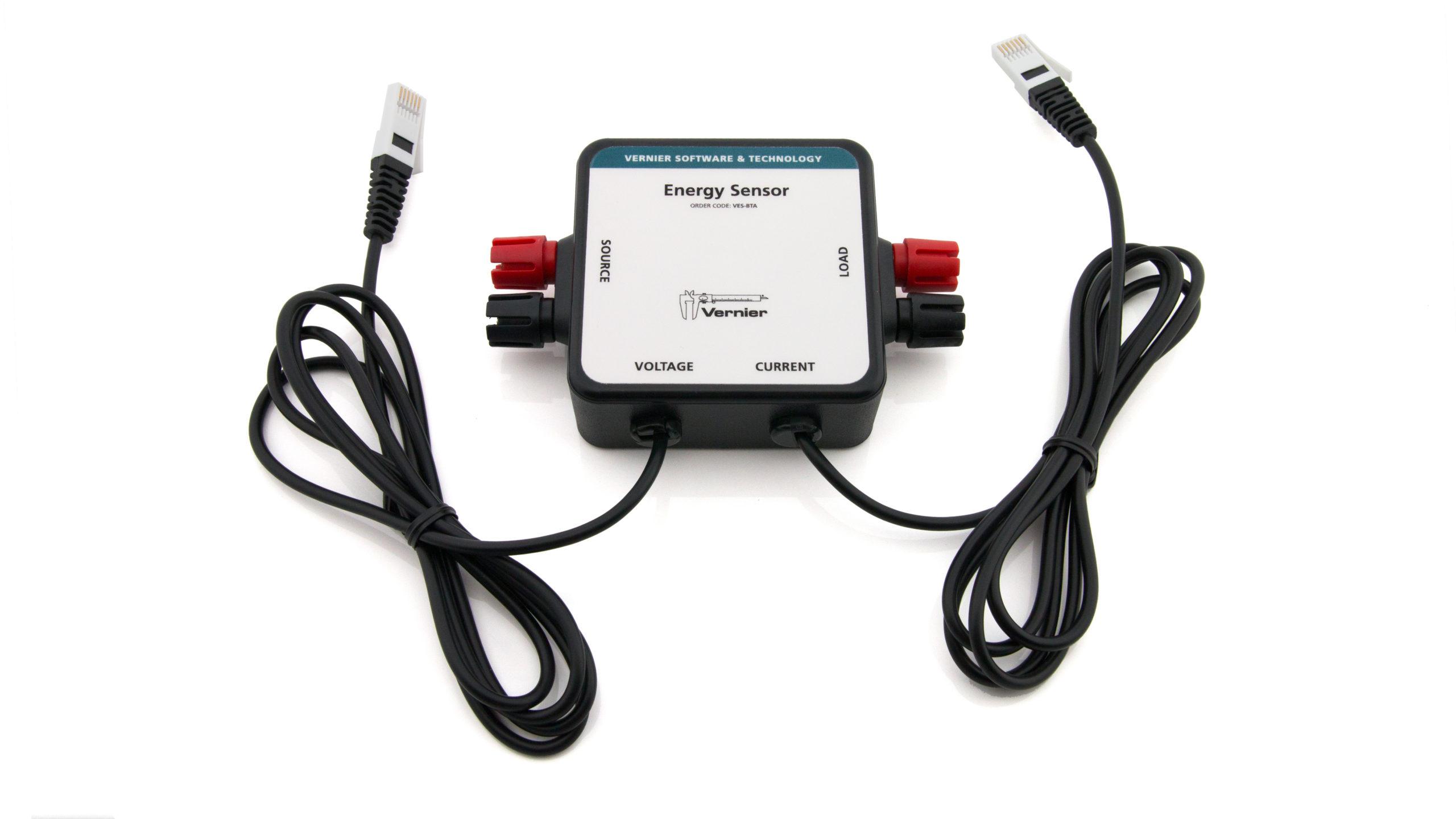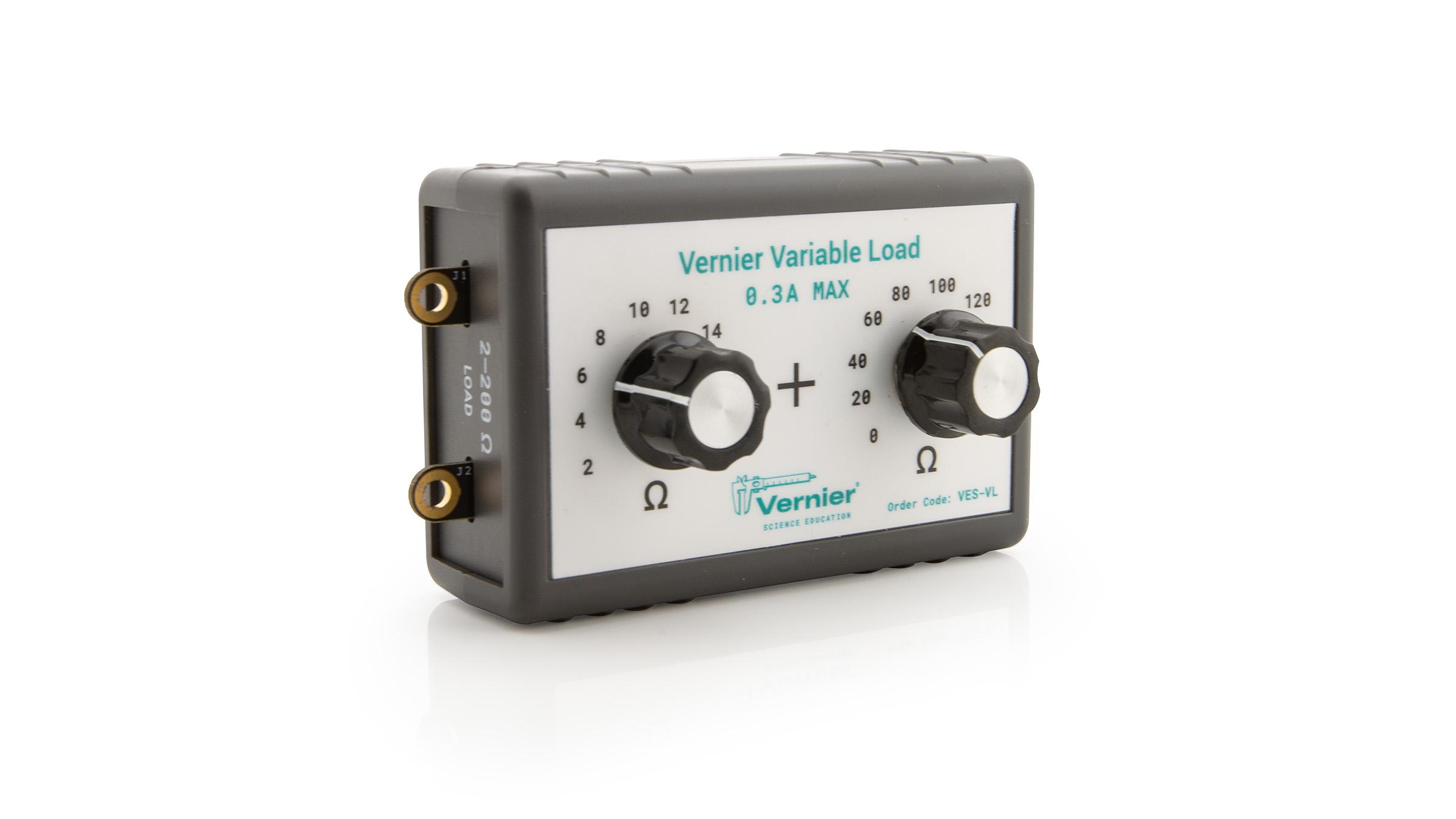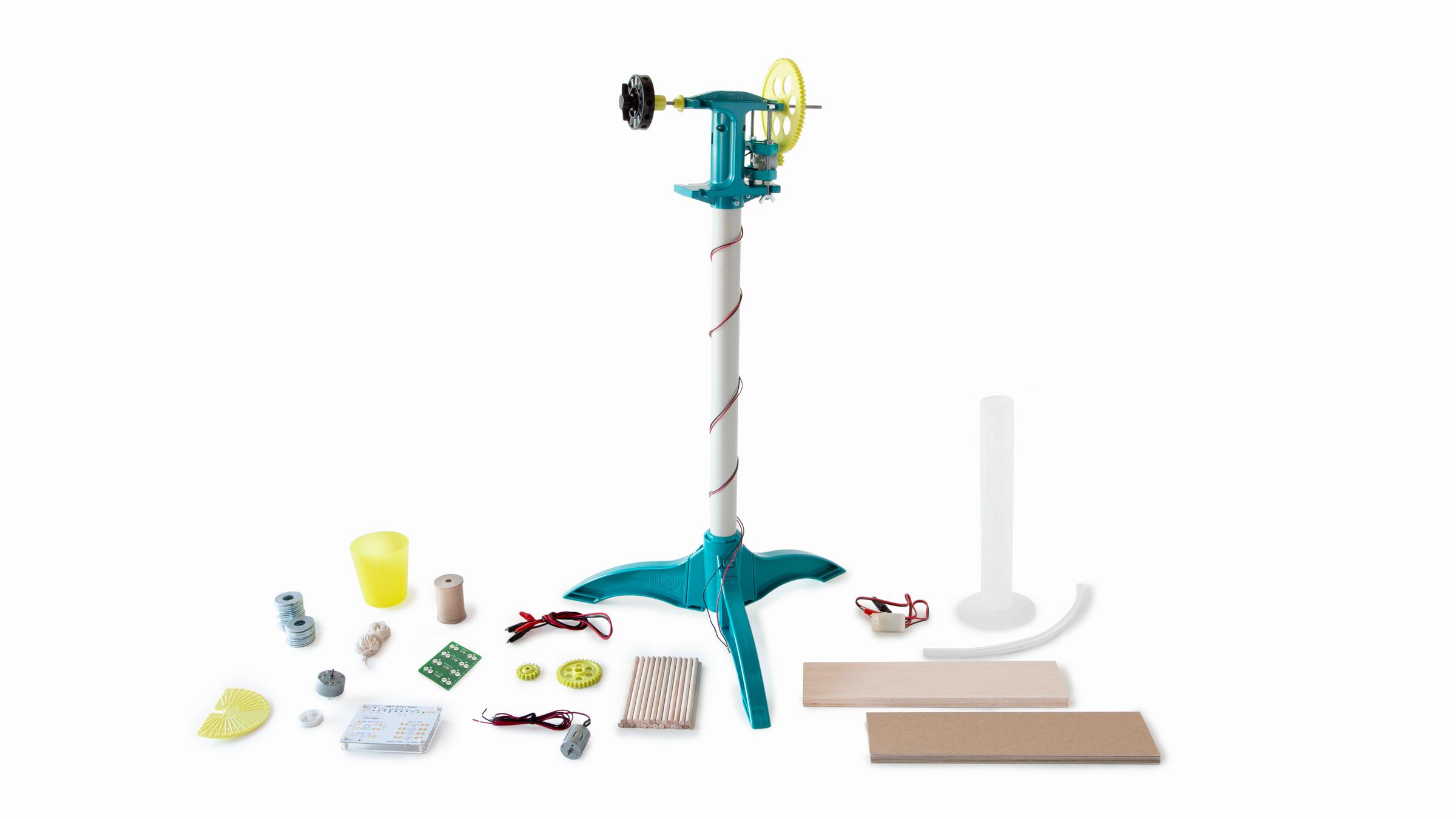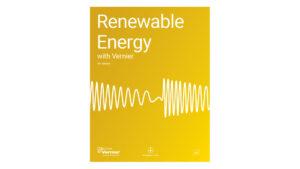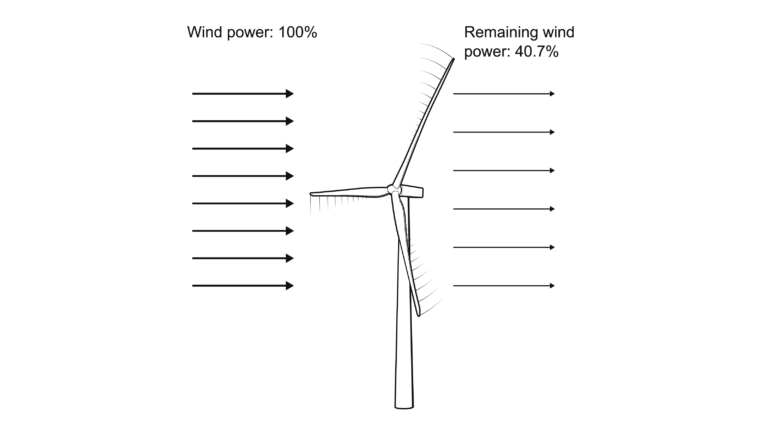
Introduction
The efficiency of a wind turbine can be defined by the following equation:
For a wind turbine to be 100% efficient, all of the energy available in the wind would be converted into electricity. In other words, all of the energy in the wind would be transformed and the air would stop moving. This is not possible in practice because a rotor only spins if the wind passes over the blades. If a rotor were to stop all the moving air, the turbine would not be able to convert the wind’s kinetic energy to electrical energy.
A German physicist, Albert Betz, calculated that it is impossible to design a wind turbine that is able to convert more than 59.3% of the kinetic energy of the wind into mechanical energy turning a rotor. Known as the Betz Limit, 59.3% is the theoretical maximum efficiency for any wind turbine operating in real-world conditions (open air flow). In typical operating wind speeds, most modern wind turbines are 25–45% efficient.
The Betz Limit applies only to the transformation of the kinetic energy in the wind into mechanical energy in the rotating blades. The generator in the wind turbine, which transforms the mechanical energy into electrical energy, further reduces the total efficiency. To understand this process, imagine that the blades of a wind turbine convert 50% of the available power in the wind into mechanical energy (rotation). Then, the generator converts 80% of this mechanical energy into electrical energy. The overall efficiency of this wind turbine would therefore be 0.5 × 0.8 = 0.4, or 40% efficient.
When designing blades for a wind turbine, engineers try to maximize the efficiency of the rotor across a range of wind speeds—a wind turbine needs to be highly efficient at low wind speeds (4–8 m/s), which are most common, but it also needs to perform and survive in extreme wind speeds (>25 m/s)! Over time, engineers have experimented with many different shapes, designs, materials, and number of blades to find which work best. In this experiment, you will experiment with different blade designs to maximize efficiency.
Objectives
- Measure the power produced by a wind turbine.
- Calculate the efficiency of a wind turbine.
- Test blade design variables.
- Evaluate data to determine which blade design is most efficient.
Sensors and Equipment
This experiment features the following sensors and equipment. Additional equipment may be required.
Ready to Experiment?
Ask an Expert
Get answers to your questions about how to teach this experiment with our support team.
- Call toll-free: 888-837-6437
- Chat with Us
- Email support@vernier.com
Purchase the Lab Book
This experiment is #12 of Renewable Energy with Vernier. The experiment in the book includes student instructions as well as instructor information for set up, helpful hints, and sample graphs and data.

